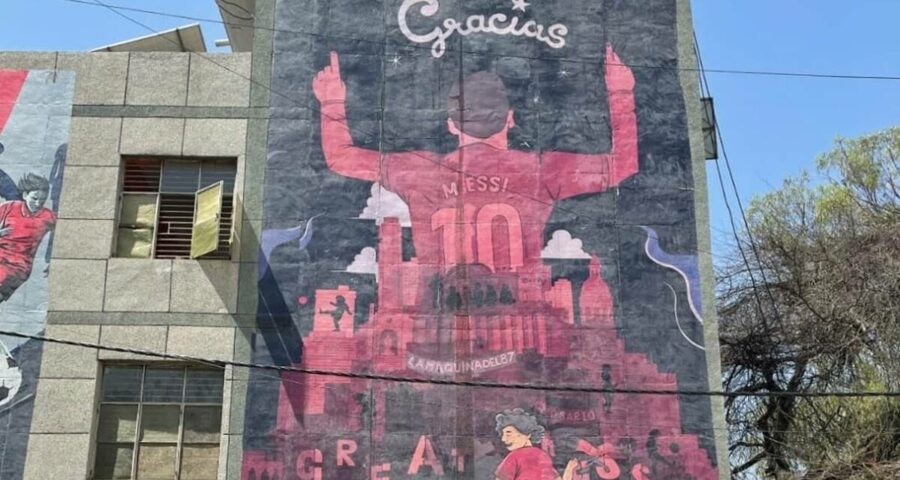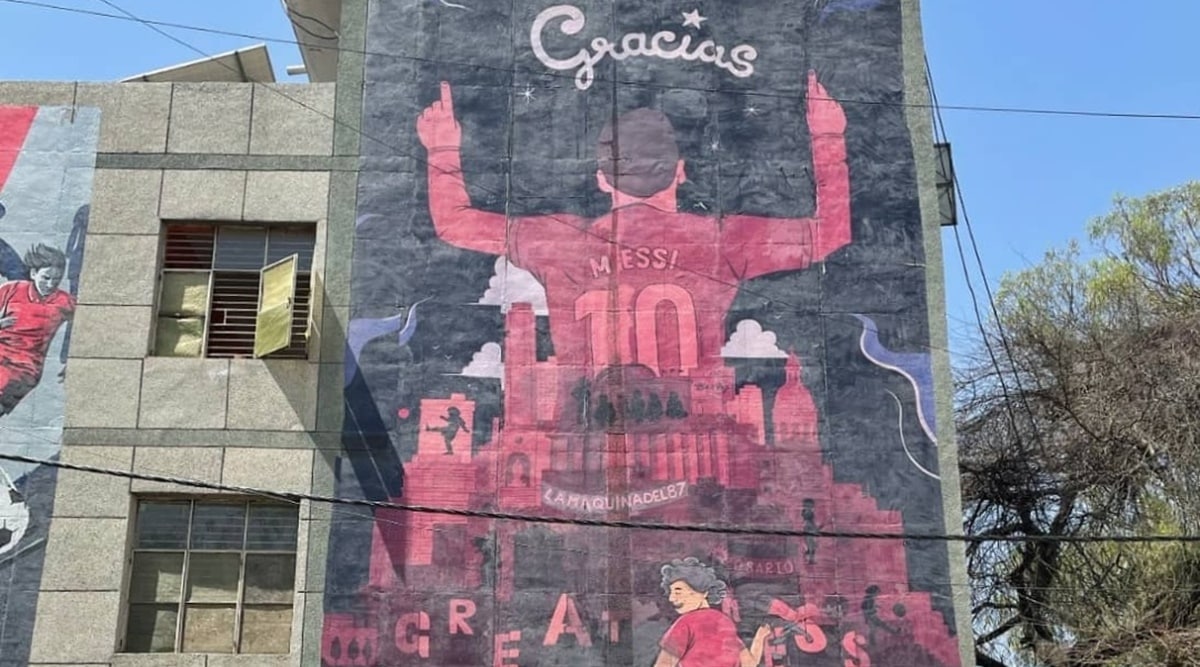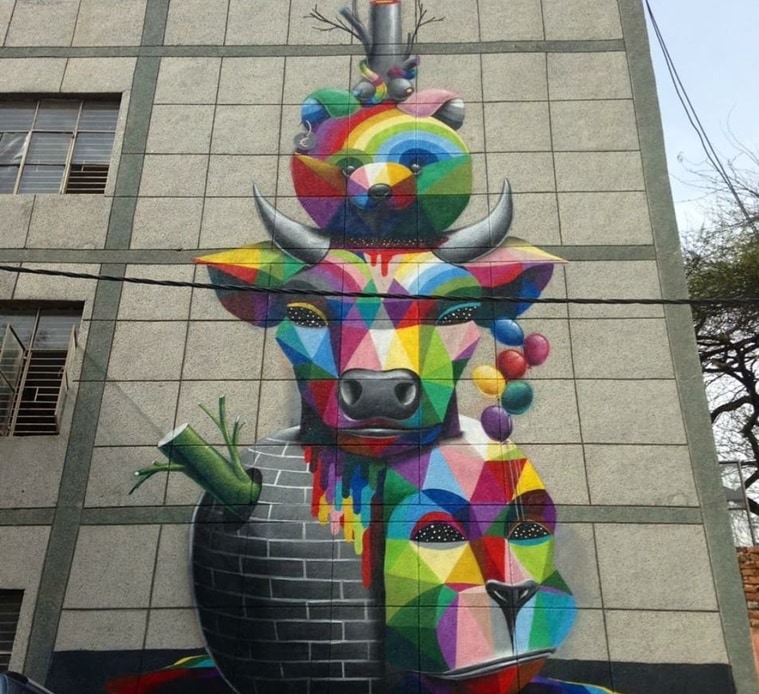Football legend’s portrait replaces existing murals of Madhubala and Anarkali in Bandra.
A wall of a building on Bandra’s Chapel Road has become the site of a controversial advertising campaign. In March, brewery Budweiser India roped in graffiti artists through Animal, a creative agency, to paint a portrait of Lionel Messi on the facade of a private property in a bid to pay tribute to the football legend.
Over the weekend, social media users raised concerns over the advertisement as it was painted over the existing murals of Madhubala and Anarkali. The Anarkali mural depicted a famous still from the 1953 film, featuring actors Pradeep Kumar and Bina Rai as the star-crossed lovers, Salim and Nadira. It was painted by artist Ranjit Dahiya in 2012 in the style of yesteryear hand-painted posters. The mural was the first in his series of urban murals, celebrating Mumbai’s rich film heritage, made under his banner called Bollywood Art Project (BAP).
A couple of years later, the BAP gave Anarkali a neighbour, a mural of actor Madhubala. Both the murals were over 20-feet tall.
Now, a scene from Messi’s childhood, when the Argentinean footballer joined Barcelona’s La Masia at the age of 13, has replaced the Anarkali-Madhubala murals.
“I am not okay with what has happened. It has ruined my art and it’s very immature. Madhubala and these characters represent this city, and the culture of Bollywood. By painting over it, they have removed this culture,” Dahiya said.
Several artists and designers took to social media to comment on the issue. They said painting over an existing art was “unethical”. The issue gained traction with a series of posts by St+art India, an urban art project.
Budweiser India has replaced St+art India’s murals in Hauz Khas Village, Delhi, too. All the Messi murals culminate as a collage on the brand’s social media, tracing the footballer’s path to success.
St+art India on Instagram said, “It has taken many years for organisations such as ours to build the street art scene in India. One cannot simply hijack it OVERNIGHT… This is not art. This is blatant advertising in the name of street art.” St+art India also highlighted the case of the Bandra murals.
In response to these comments and St+art India’s open message, a spokesperson from Budweiser India said, “…As part of curating these murals, we reached out to multiple artists, including St+art India, and collaborated with artists that met our creative and commercial direction through these illustrations that they curated over months even restored the walls. Our aim was always to offer the insider into the G.O.A.T’s iconic journey and inspire fans through creative murals that celebrated his journey. We continue to support the creator community.”
Although it appears that Budweiser India wished to appeal to Bandra’s football-loving crowds, the brand refused to comment on why it chose these particular walls with the pre-existing artwork.
Dahiya said he was not among the artists approached by Budweiser India for the campaign, led by New Delhi and New York-based Animal. The agency’s social media post read, “Advertising on walls has existed in India for more than a century. Some of the greatest artists India has had have worked on this medium.” Another post stated that Animal does not do location scouting or select the walls.
Animal’s creative director Kunel Gaur did not respond to calls and messages by The Indian Express.
The Messi mural in Bandra was executed by Omkar Dhareshwar and Zain Siddiqui, graffiti and mural artists, who go by the moniker Wicked Broz. On the weekend, the duo posted a statement that read, “We are sorry! We apologise for painting over a few iconic pieces in Mumbai.
As an arts organisation, this action of ours to paint for Budweiser was against the very principles we stand for…The campaign conceptualisation, wall permissions, creatives and paintwork on walls was not done by us…” Wicked Broz did not reply to messages by this correspondent.
Dahiya painted the Anarkali mural with his own funds of Rs 40,000 and got the building owner’s permission for it. Despite rumours that Budweiser India paid for the wall space, Joahaz Viegas, a Bandra resident, who helps with logistics and permissions for wall artists, including Dahiya, said the building owner and local residents gave their nod for the Budweiser India’s campaign.
Some posts on social media said street art is inherently impermanent and can be replaced by new works. The Messi murals in Bandra have also erased the graffiti by artists Zake and Flyin Munki.
Zake said, “It’s okay if it was the work of an artist but this is an advertisement by a brand. The whole point of this was commercial.” He added that the building owner and the locals could have taken more interest in protecting the existing murals and graffiti.
Source: Read Full Article



